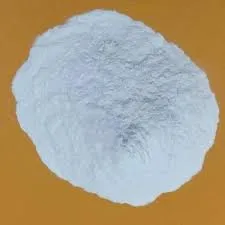
Nov . 23, 2024 12:21 Back to list
hydroxypropyl methyl cellulose in supplements
The Role of Hydroxypropyl Methylcellulose in Supplements
Hydroxypropyl Methylcellulose (HPMC) is a cellulose derivative widely used in various industries, including food, pharmaceuticals, and cosmetics. It is particularly notable for its multifunctionality, which makes it an essential ingredient in many dietary supplements. This article explores the benefits, applications, and significance of HPMC in supplements, shedding light on why it has become a popular choice among manufacturers and consumers alike.
What is Hydroxypropyl Methylcellulose?
Hydroxypropyl Methylcellulose is a non-ionic, water-soluble polymer derived from cellulose, an organic polysaccharide found in the cell walls of plants. HPMC is produced through the chemical modification of cellulose, leading to enhanced properties such as improved solubility and gel-forming ability. As a result, it is widely used as a thickening agent, emulsifier, and stabilizer in various formulations.
Benefits of HPMC in Supplements
1. Binding Agent HPMC acts as an efficient binder in tablet formulations. It helps hold the ingredients together, ensuring that the tablets remain intact during manufacturing and storage. This property is especially vital when it comes to ensuring the integrity of herbal and vitamin supplements which often contain powders that may not bind well on their own.
2. Controlled Release One of the most significant advantages of HPMC in supplement formulations is its ability to provide controlled release of active ingredients. By modifying the concentration of HPMC in a capsule or tablet, manufacturers can create products that dissolve at different rates in the gastrointestinal tract. This is particularly useful for ensuring that nutrients are released over an extended period, enhancing their bioavailability and effectiveness.
3. Vegetarian and Vegan-Friendly Unlike some other binding agents and excipients that are derived from animal sources, HPMC is plant-based, making it suitable for vegetarian and vegan consumers. This attribute aligns with the growing trend towards plant-based diets and eco-friendly products, broadening the appeal of supplements that utilize HPMC.
4. Stabilization of Formulations HPMC improves the stability of various formulations by preventing separation of ingredients and enhancing texture. This property is essential in liquid supplements, ensuring that active ingredients remain well-dispersed and effective.
5. Texture Enhancer In addition to its functional benefits, HPMC is also appreciated for its ability to improve the mouthfeel of supplements, especially in liquid forms. It creates a smooth texture, making products more palatable to consumers. This is particularly important for children’s vitamins and supplements where taste and texture can significantly influence acceptance.
hydroxypropyl methyl cellulose in supplements

Applications of HPMC in Supplements
HPMC is found in a wide variety of dietary supplements. It is commonly used in
- Tablets and Capsules HPMC is frequently used in the production of both conventional tablets and capsules, helping to ensure they are easy to swallow and maintain their integrity.
- Liquid Formulations In liquid dietary supplements, HPMC acts as a thickening agent that provides body and stability to syrups and solutions.
- Powdered Supplements For powdered formulations, HPMC can assist in ensuring that the ingredients mix thoroughly and remain stable over time.
- Meal Replacement Shakes In meal replacement products, HPMC can help create a satisfying texture while contributing to the overall nutritional value.
The Future of HPMC in Supplements
The demand for clean-label ingredients is rising, driven by consumer preferences for transparency and sustainability in food and supplements. HPMC’s plant-based origin, multifunctionality, and safety profile position it well to meet these consumer demands. As more manufacturers seek to incorporate natural, non-toxic ingredients, HPMC will likely continue to play a vital role in supplement formulation.
In conclusion, Hydroxypropyl Methylcellulose is a versatile ingredient that offers numerous benefits in dietary supplements. From improving product stability and texture to enhancing the bioavailability of nutrients, HPMC is an essential component that aligns with current consumer trends towards health, wellness, and sustainable choices. Its ability to serve multiple functions in various formulations makes it a valuable asset in the evolving landscape of dietary supplements. As we look to the future, HPMC is poised to contribute significantly to the innovation and development of cleaner and more effective health products.
-
Versatile Hpmc Uses in Different Industries
NewsJun.19,2025
-
Redispersible Powder's Role in Enhancing Durability of Construction Products
NewsJun.19,2025
-
Hydroxyethyl Cellulose Applications Driving Green Industrial Processes
NewsJun.19,2025
-
Exploring Different Redispersible Polymer Powder
NewsJun.19,2025
-
Choosing the Right Mortar Bonding Agent
NewsJun.19,2025
-
Applications and Significance of China Hpmc in Modern Industries
NewsJun.19,2025







